Using the methods described in this post, I computed the 14-bit Unity Gain ISO of the a7 at about 525, the 13-bit Unity Gain ISO at 1050, and the full-well capacity at about 86000 electrons. These are very good numbers. I’m a little suspicious, because the same tests gave unreasonably good results for the a7R, and there may be some optimism in the a7 results, but I’m reporting them anyway. I don’t want to allow the sins (if that’s what they are) of its sibling to prejudice me against the a7.
Why two separate UG ISOs? The a7 advertises itself in the EXIF data as a 14-bit camera. The data that comes out of Rawdigger is 14-bit data. The calculations are done on that basis. When we want to compare the a7 to other sensors, it makes sense to not make the resolution of the analog to digital converter part of the calculation, and normalizing everything to a 14-bit ADC is convenient.
However, when deciding how far to turn up the ISO, the resolution of the ADC is important, and from that perspective, the Unity Gain ISO of the a7 is about 1000. That means that turning the ISO knob up past 1600 or 3200 will not be useful compared to pushing in post-processing.
For comparison to other cameras, I offer the following graphs.
Here’s how the Unity Gain ISO varies with pixel pitch for a group of cameras that I’ve measured:
Here’s the full well capacity for the same group, plotted against sensel area, assuming 100% fill factor:
Here’s the engineering dynamic range that can theoretically be achieved plotted against sensel area:
This dynamic range is defined as the ratio of this highest signal the sensor can measure to the point at which the signal and the photon noise have the same value, assuming perfect amplification and a perfect ADC. In practice, such a large dynamic range is unattainable.
To put cameras with different sized sensels on an even footing, here’s the engineering dynamic range you’d get if you res’d images from all the cameras down to 12 megapixels using averaging methods:
Conclusion? The a7 has a state-of-the-art sensor.
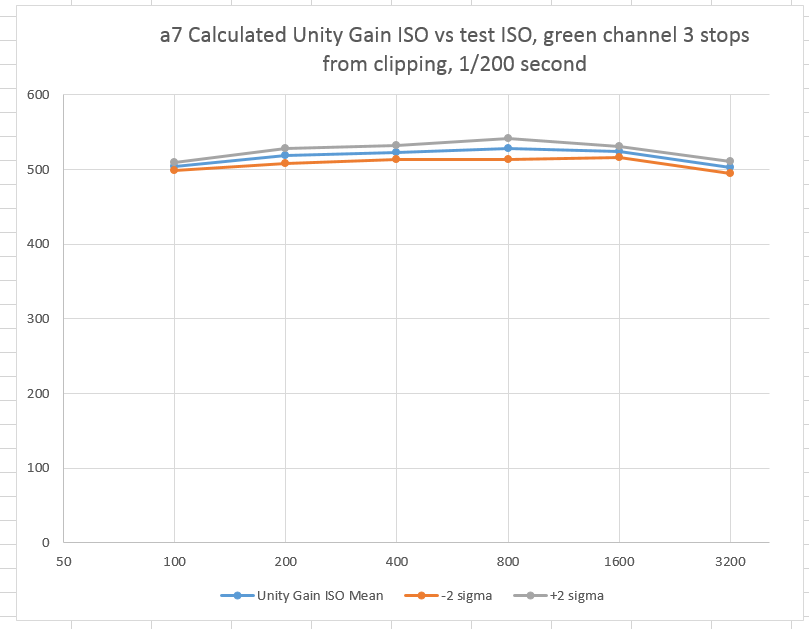
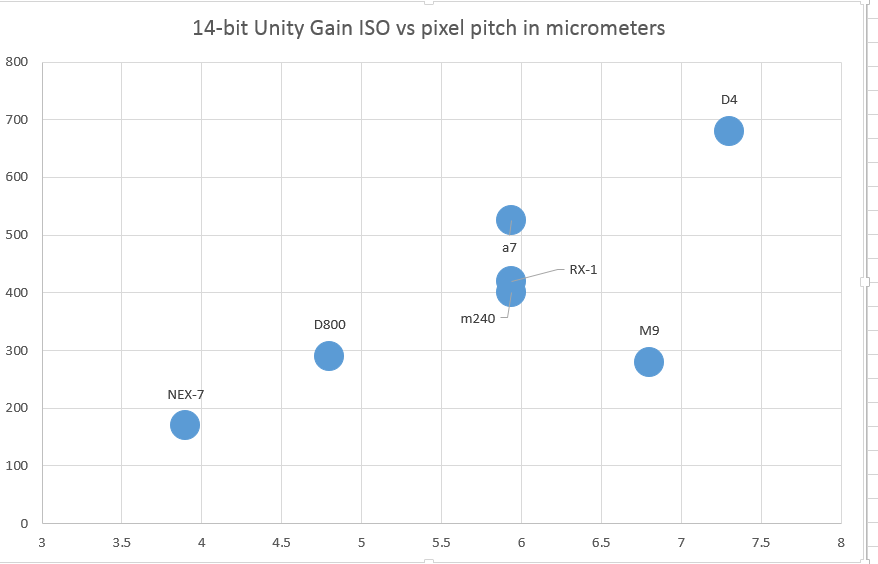
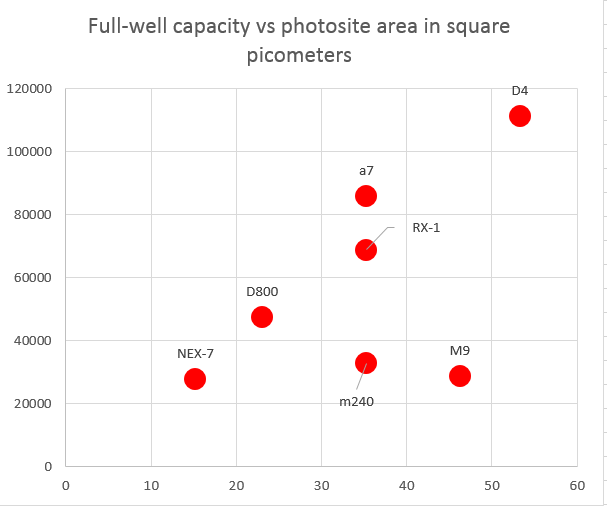
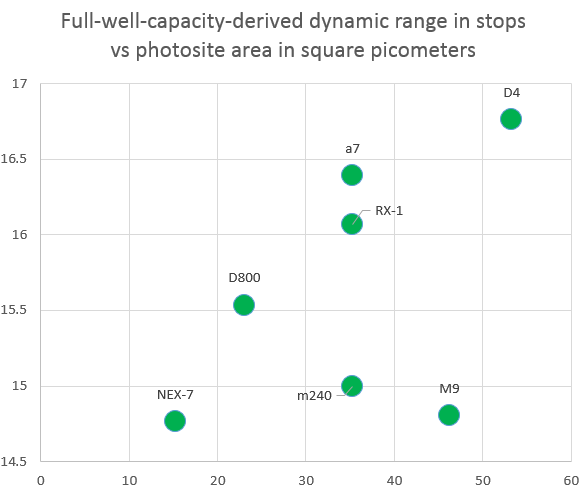
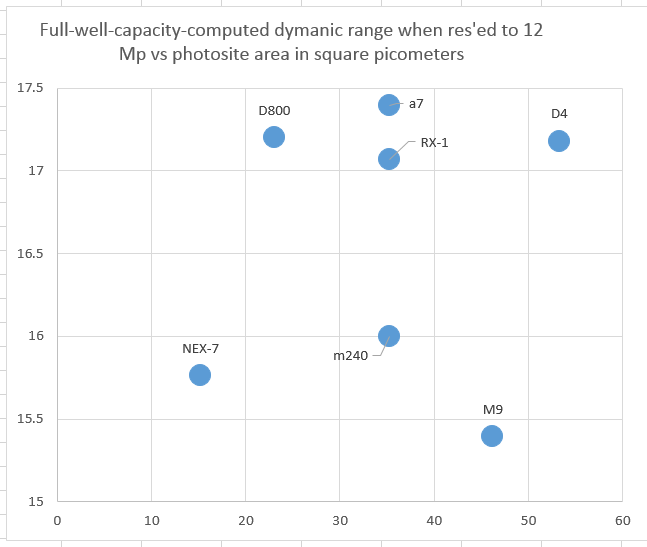
typ – subject shall be Testing the Sony a7, part 8
Fixed. Thanks!